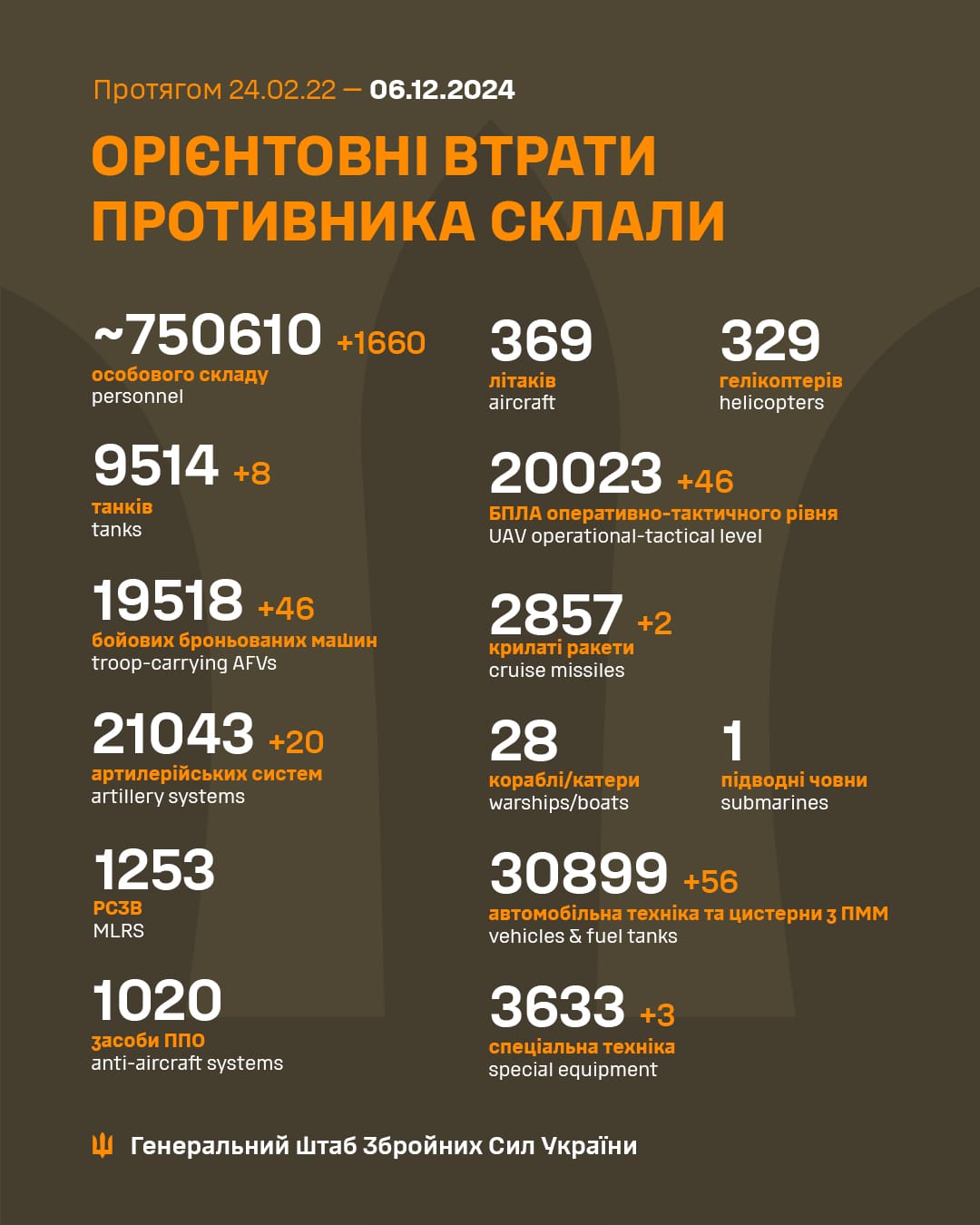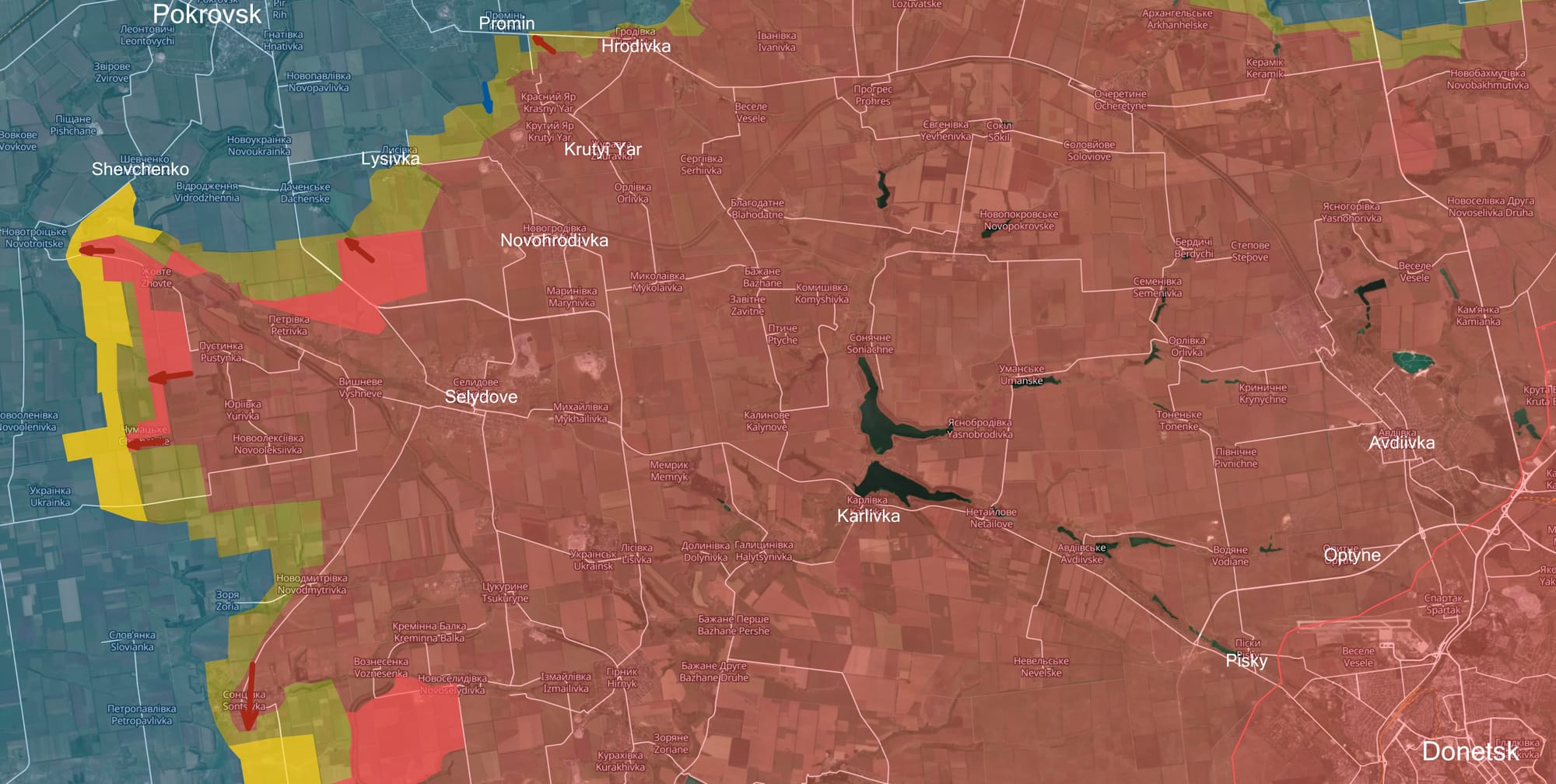Following the events of the last month, it may seem that Vladimir Putin would be celebrating. The results of the U.S. election were enormously comforting to Russia and damaging to Ukraine. Weeks before Donald Trump takes office, "peace plans" for Ukraine are already thick on the ground, and all of them reward Putin for his illegal, unprovoked invasion.
But even as Putin prepares to celebrate his bloody work in Ukraine, events 3,000 kilometers away are threatening to hand Russia a substantial loss that could reshape global politics in ways that are still poorly defined.
Speaking with Japan's Kyodo News, Ukrainian President Volodymyr Zelenskyy seemed resigned to seeking a deal that would inevitably diminish Ukraine.
Responding to all questions in Ukrainian, he frankly admitted it is difficult to retake by force some of the Russian-occupied parts of the country, including Crimea that Russia annexed in 2014.
"Our army lacks the strength to do that. That is true," he said. "We do have to find diplomatic solutions."
Still, Zelenskyy has been visiting and calling European leaders, attempting to shore up support and supplies that might prevent Putin from trying to pick up more territory over the next few months. But everyone seems to accept that the idea of Ukraine fighting its way back to the pre-invasion border has been abandoned.
That apparent acquiescence comes as Russia passes three-quarters of a million men lost in the effort to complete what Putin originally saw as a three-day conquest of his much smaller neighbor.

Over the past month, Russian forces have continued to creep closer to the city of Pokrovsk, mostly along the highway to the south. In the north, Russia has managed to narrow the area of Ukrainian control in the Russian province of Kursk.
However, Russia has not managed to capture Pokrovsk and it has still not dislodged Ukrainian forces from over a dozen Russian towns and villages in Kursk.
In short, the past month has seen more of the tactics and results that have been evident since the summer: Russia has made slow advances by using an overwhelming advantage in numbers, heavy use of artillery and bombing, and an absolute disdain for losses. Ukraine has fallen back in a series of defensive maneuvers, holding Russian forces at strong points and using large numbers of drones to help address a shortage of personnel.

The line of towns from Hrodivka to Selydove, which represented the front lines of the Russian advance in early November, are now several kilometers behind the current action. This shows how Russia continues to move toward Pokrovsk along a broad front, rarely extending the kind of narrow salient that it risked earlier in the war.
The positions at Shevchenko and Lysivka would seem to represent the final step in the defense of Pokrovsk before fighting moves into the city and Russia's proximity has finally shut down much of the mining, refining, and transportation that makes Pokrovsk a strategic goal.
However, even as Russia continues to move forward, Ukraine is still having considerable success in destroying Russian vehicles and assault groups. There seems to be no sign that Russia has increased its speed toward the city or had sudden success in other parts of Ukraine.
And there are two big reasons why, if Putin doesn't get a lifeline from Trump, everything could still go in Ukraine's direction.
Meanwhile, in Syria...
But even as Russia continues to move meter by bloody meter across Ukraine, an astounding reversal is happening in another part of the world.
At the end of November, rebel forces in Syria suddenly broke free of their small pocket of control along the Turkish border northwest of Aleppo. With astounding speed, fighters opposed to Russian-backed authoritarian dictator Bashar al-Assad captured Aleppo—Syria's second-largest city—and moved rapidly to expand their area of control.
On Thursday, the rebel forces captured the city of Hama, 110 km south of Aleppo. That same evening, government forces fled from the cities of Salamiyah and Talbiseh. On Thursday evening, rebel forces entered these cities with little or no fighting and rapidly moved on toward the city of Homs – roughly halfway between Aleppo and the capital at Damascus.
In addition, local rebel cells are reportedly winning victories over government forces in locations across Syria. That includes towns around the city of Suwayda, which is south of Damascus.
By capturing Hama, the rebels have already achieved the kind of strategic win that Russia is trying to accomplish at Pokrovsk. Hama is a logistical hub that lies along a critical route for moving materials inland from the coast. It's also in an area that had provided Alawite fighters who supported Assad during previous rebellions.
At the moment, the rebel force appears to be capturing territory almost as fast as it can move. Opposition from forces of the Assad government and Russian allies has been largely despondent and disorganized. There are also reports of some government forces either throwing down their arms or joining with the rebels.
However, that may change when the fighting reaches Homs, where government troops have reportedly been gathering. If that's the case, we'll likely know today.
Syria is Russia's biggest ally in the Middle East and provides it with naval ports on the Mediterranean and military bases in an area that has been at the center of world events again and again. Russian forces are based directly in Syria and have frequently helped in repressing rebellions against Assad, especially in the months following the "Arab Spring" of 2011. Russian planes and helicopters provided air strikes against rebel positions. They may have also taken part in dropping chemical weapons that resulted in the deaths of thousands, including children. Russian forces have also been accused in taking part in torture and other atrocities as they worked to keep Assad in power.
Russia reportedly has over 4,000 troops in Syria along with hundreds of ships, planes, and helicopters. That includes two wings of strategic bombers positioned for potential use elsewhere in the Middle East.
Russian forces have already abandoned multiple bases as the rebels advanced. Satellite images show Russian ships that were present at the Tartus naval base early in the week hurriedly departing as rebel forces approached that seaport town. At the moment, that base appears to have been either nearly or completely abandoned.
The rebel advance began on November 27. Just nine days later the pace of movement and failure of Assad's forces to mount a significant resistance, suggests that this could finally be the end of a Ba'athist regime that has ruled Syria since a coup in 1963.
Should the rebels succeed, Russia will lose its primary access to the Mediterranean and a position in the Middle East that has allowed it to be a major player in the region for decades. Unlike the U.S. and Iraq or Afghanistan, Putin was not looking for a way to leave Syria. He needs Syria.
Even if it manages to get its troops and equipment out, this is a tremendous loss for Russia and a personal loss for Putin. Since 2011, whenever Assad has faced pressure, his dictator pal has been there to save him.
Only now, thanks to Putin, Russia's army is rather busy. Russian ground and air forces are far too stuck in Donetsk to rush to Assad's assistance. And if they tried, it would represent an opening for Zelenskyy to exploit Russia's divided attention.
What will happen if the rebels succeed in Syria is hard to determine at the moment. Unlike previous rounds of rebellion, some of which were headed by groups with more inclination to look to the West, the current force is actually a collaboration between several groups, many of whom look more than a little like the kind of extremists that were behind al Queda, ISIS, and the Taliban.
The leader of the coalition, Abu Mohammad al-Jolani, heads up Hayat Tahrir Al-Sham (HTS), which grew from a former al Queda cell. Though he has since tried to distance HTS from those origins, there's little doubt that some form of "Islamic state" is the end goal for most of those now rising against Assad.
With Isreal already condemned for genocide in Gaza and firing missiles into Lebanon; Houthi rebels still attacking ships in the Gulf of Aden; and Trump threatening to make everything worse, the Middle East is already on high broil.
No one is going to mourn Bashar al-Assad. Everyone should cheer the loss of Russian access in the Middle East. But whether the coalition of forces now driving toward those results can form a stable government, whether that government will represent the kind of horror the Taliban currently brings to Afghanistan, and whether it will feel compelled to play a role in the conflicts to the south of Syria is all up in the air.
Right now, let's just applaud the black eye this is giving Putin and hope that it puts a damper on further efforts to expand the Russian empire.
Speaking of which...
Meanwhile, in Russia
The cost of the second Ukraine invasion has been ghastly in Ukraine. But, approaching the third anniversary of the invasion, the cost is also being felt in Russia.
Throughout Putin's war, the Russian government has propped up the flagging economy. It has kept the value of the ruble artificially high and prevented consumers in Moscow and St. Petersburg from feeling the full brunt of the international isolation and ongoing expense from the conflict.
But the pretense of a stable economy is fading.
Moscow has drained more than half of its sovereign wealth fund in propping up the ruble, according to Alex Isakov, a Bloomberg economist who once worked at Russia's central bank. This week it nevertheless hit its weakest point since the early part of the war. And sky-high borrowing costs soon will bite Russian consumers as the central bank tries to keep a lid on inflation, bringing home a financial cost to a war that’s killed tens of thousands of people in their name.
Moscow has experienced little of the conflict with Ukraine. The men who have been ground into the mud of Donetsk have largely come from rural areas where there's not even an effort to disguise Putin's failure to do more than keep his friends rich and his local neighborhood livable.
But Russia is now reaching the point where Putin's "just keep throwing men and machines on the fire" approach to war may be at its limits. The cost of war may finally come home to the Russian consumers who ... absolutely deserve it.
With diminished capacity to cushion the ruble, a weaker exchange rate will mean more inflation for Russian consumers (many of whom favor continuing the bloodshed in Ukraine, according to a recent poll). The central bank will also be less able to lower interest rates. The Bank of Russia’s benchmark now stands at 21%, and is likely to stay at double-digits for years to come, Isakov says.
A "war of attrition" doesn't have to mean fighting until the last piece of armor lies in ruins. It can also mean fighting until a nation's populace and economy can no longer shoulder the burden of continuing the conflict.
Russia is close to that limit.
If Ukraine can continue to get economic and military support from the West, a rapid reversal of Russia's slow advance is genuinely possible. Even if it comes to putting signatures on a treaty rather than driving Russian forces across the border, Ukraine could end up in a much better position than anyone might suspect.
But all of that depends on Trump. And that's a horrible position.
Update: Rebel forces reached Homs on Saturday, despite Russian bombing of bridges along the route. They have now largely taken the city as Assad’s forces and Russian troops continue to backpedal.
Coming up: A look at the "Hell" drone-rocket and other new weapons just reaching the battlefield as drones are increasingly allowed to pick their own targets.











Comments
We want Uncharted Blue to be a welcoming and progressive space.
Before commenting, make sure you've read our Community Guidelines.